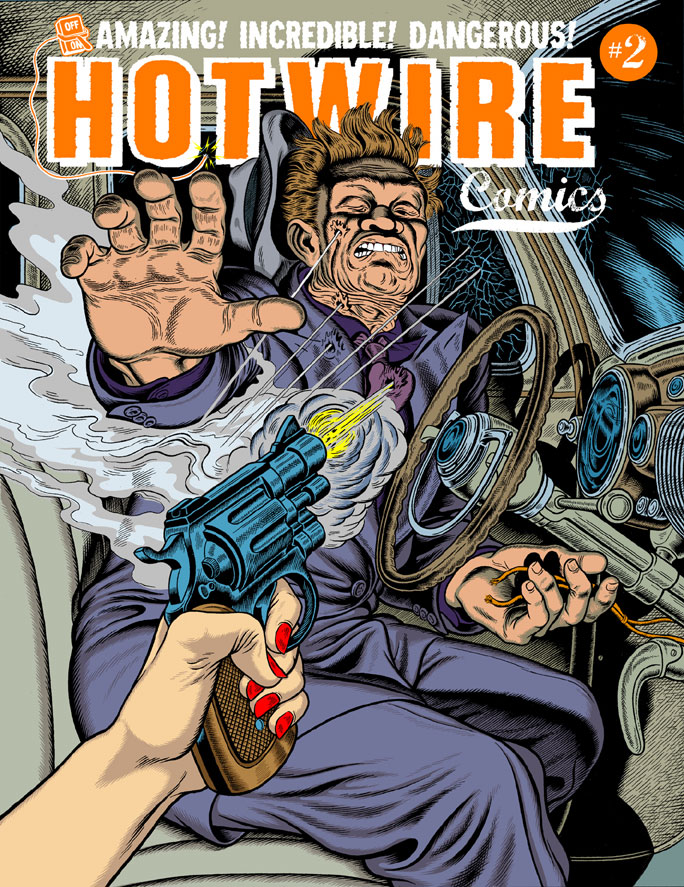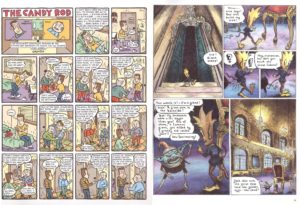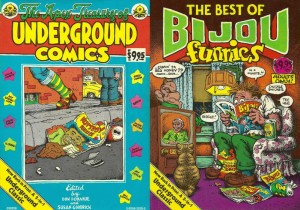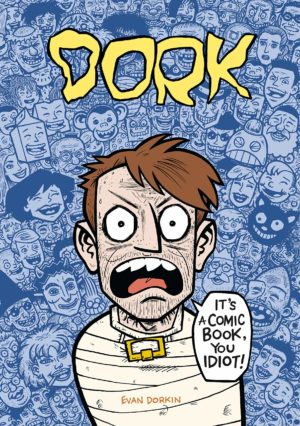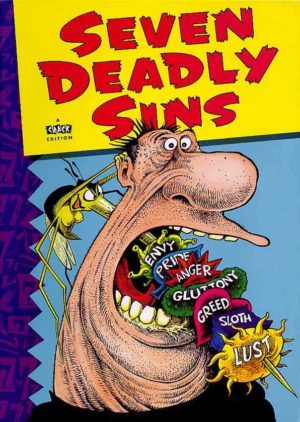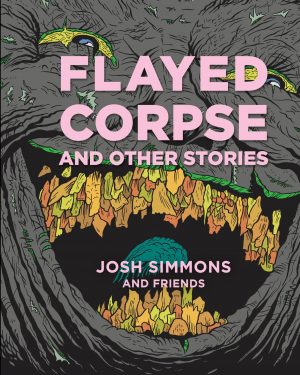Review by Frank Plowright
Editor Glenn Head hit on an inviting formula for Hotwire’s opening anthology, and sees no reason to change anything for a second shot. Except the title that is, from Hotwire Comix and Capers to the simpler Hotwire Comics. Trashy strips sit alongside a variety of illustrations and if it appeals to Head, he hopes it’ll appeal to you. There’s no reason it shouldn’t if you enjoy attractively packaged lowbrow sleaze to while away an hour or two. This is a case of Tim Lane’s cover very definitely being trustworthy.
Inside the humour is violent, sometimes scatalogical, and often plain bizarre. Mack White scores highly on that scale for supplying such open traditional artwork on his nonsense strip, smartly confusing. Ivan Brunetti, Sam Henderson, Lorna Millar and Johnny Ryan cover the intention to offend, while Head’s own strips are nutty fables reminiscent of Kim Deitch.
A broad collective consciousness connects most Hotwire contributors, a brash punk outlook, but while Head’s sequencing is again impeccable, there’s one creator who sits uncomfortably alongside the majority. Carol Swain’s eight pages are Hotwire’s most personal and introspective, the quietest of the strips. Her work can be wry, but she doesn’t deal in comedy as such, nor is she ever in your face. Is ‘Communicable Disease’ an allegory about Alzheimer’s, or is there something else going on? Reader response is possibly all. R. Sikoryak’s conflating literary works with classic comics is also different in tone, but the brightness and satire is at least connected to the rest of Hotwire. This time his impeccable Little Nemo in Slumberland illustrations tell The Picture of Dorian Gray. Also slightly out of place is a second musing on the Clash by Chris Estey, illustrated by David Lasky. As previously, it skims around snippets of the Clash’s history and influences without ever making a real point.
Illustrations are as important to Head as the comic strips, and they separate the latter nicely. There are more of David Paleo’s speculations about the readership, Head’s own wild endpapers, Mark Dean Veca channelling the 1970s, and David Sandlin influenced by Robert Williams. Sandlin is also responsible for one of the more out there strips. Danny Hellman, Onsmith and Mary Fleener’s illustrations are strangely unsettling visions, while Fleener’s cautionary autobiographical strip is a highlight. Craig Yoe’s noodling doodling generates both a strip and the back cover. The sample art combines Onsmith’s memories of a neighbour with Tobias Tak’s strange fairy tale.
There are a couple of puzzling editorial judgements. Perfectly pitched it may be, but was Christian Northeast’s ‘In the Trenches’ the best use of the foldout section? A couple of other strips are poorly drawn with little point, but such is the price of singular editorial vision and Head championing people who possibly wouldn’t find it easy to see their work published elsewhere. This is a second chocolate box treat, and a third awaits.
